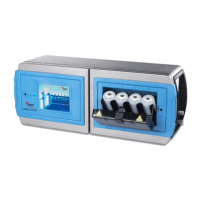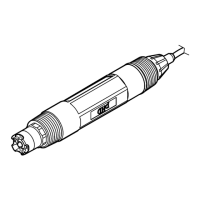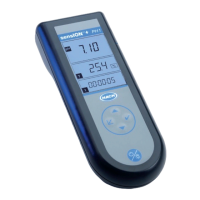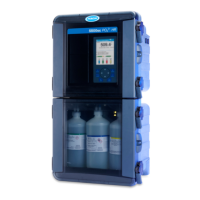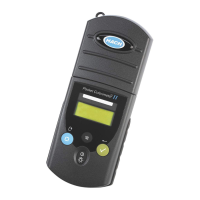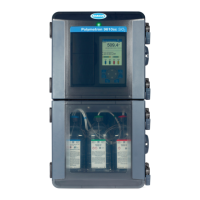Table 4 Quick connect – Discrete output 1 and 2
Wiring connector 1-2 Terminal Description Default value Designation
1 Digital output 1 (+) TOC alarm (configurable) DO1+
2 Digital output 2 (+) Conductivity alarm (configurable) DO2+
3 Common return (–) Digital output 1 and 2 common
return
DO1/2–
4 12 VDC power supply + Input power supply +12 V
5 12 VDC power supply – Input power supply GND
Table 5 Quick connect – Discrete output 3 and 4
Wiring connector 3-4 Terminal Description Default value Designation
1 Digital output 3 (+) Error alarm (configurable) DO3+
2 Digital output 4 (+) Valve state (TOC analysis start,
configurable)
DO4+
3 Common return (–) Digital output 3 and 4 common
return
DO3/4–
4 12 VDC power supply + Input power supply +12 V
5 12 VDC power supply – Input power supply GND
Table 6 Connector block – Discrete outputs
Wiring connector block Terminal Description Default value Designation
1 Digital output 1 (+) TOC alarm (configurable) DO1+
2 Digital output 2 (+) Conductivity alarm (configurable) DO2+
3 Common return (–) Digital output 1 and 2 common
return
DO1/2 –
4 Digital output 3 (+) Error alarm (configurable) DO3+
5 Digital output 4 (+) Valve state (TOC analysis start,
configurable)
DO4+
6 Common return (–) Digital output 3 and 4 common
return
DO3/4 –
7 12 VDC power supply + Input power supply +12 V
8 12 VDC power supply – Input power supply GND
Connect a 40-column printer
Connect a printer to the 9-pin D-subminiature serial port as necessary. This RS232 interface
communicates at 9600 baud, 8 data bits, 1 stop bit and no parity. A 40-column printer is necessary
for the printout report. Refer to Configure the printer settings on page
33 to change the default
printer settings.
If the printer is purchased from the manufacturer of the analyzer, the DIP switches on the printer are
set at the factory. If a Seiko Instruments DPU-414 Type II thermal printer is installed, set the DIP
switches. Refer to Set the printer DIP switches on page 16.
English 15
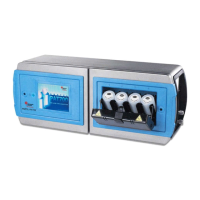
